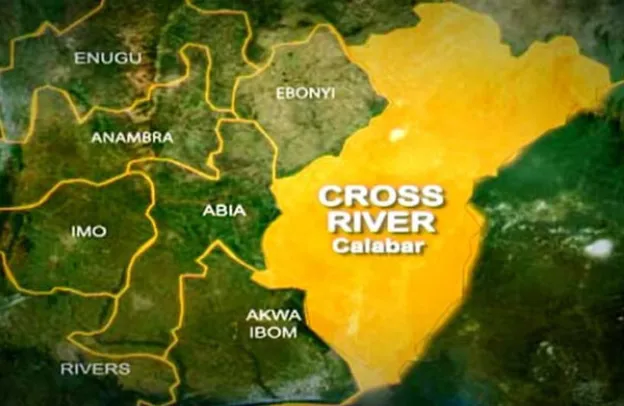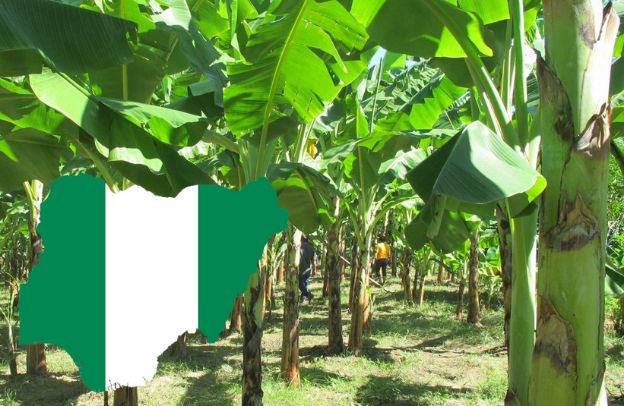The Secret to Growing High-Yield Maize: Expert Tips and Tricks

Imagine this: You are an African diaspora entrepreneur with the dream of transforming agriculture in your homeland. You have heard the whispers of Africa’s vast potential—the rich, untapped soil, the hungry markets, the opportunity to not only feed a continent but to carve out a sustainable, profitable business. But how do you go beyond the dream? How do you move from ambition to reality? The answer lies not just in your technical skills but in something far more powerful—your story.
Want to learn more about storytelling? Start by downloading the first chapter of The Storytelling Mastery.
As part of the global African diaspora, you carry a unique narrative that bridges continents, cultures, and opportunities.
In today’s interconnected economy, your story can be your most valuable asset. It builds trust, opens doors, and inspires collaboration, allowing you to harness Africa’s agricultural potential, specifically in maize (corn) farming, which stands as one of the continent’s most vital crops.
See also The Dos and Don’ts of Maize Pest Management
By combining best farming practices with the power of purposeful storytelling, you can lead the charge in not only feeding Africa but transforming it into a thriving agribusiness hub.
The Factors That Contribute To High Yield In Maize Production
Maize, commonly known as corn, stands as one of the world’s most crucial crops, playing a vital role in feeding millions and powering various industries. Its production, however, is a complex process influenced by numerous factors.
Understanding these key elements is essential for African farmers seeking to maximize yields and contribute to both African and global food security. Here are some of them for your consideration:
Climate and Weather Conditions:
Maize thrives in warm climates with temperatures between 20°C to 30°C (68°F to 86°F) and needs ample sunlight for photosynthesis. Consistent and adequate rainfall is crucial—extreme weather like droughts or excessive rain can devastate yields.
To get better maize yield, use shade nets or mulch during droughts and ensure proper drainage systems are in place for heavy rains.
Soil Quality and Fertility:
High-quality soil with balanced nutrients is vital for maize. Regularly replenishing soil with nitrogen, phosphorus, and potassium, and maintaining a slightly acidic to neutral pH, ensures healthy plant growth and optimal yields.
Consider practicing crop rotation and using organic compost to maintain soil health and improve fertility.
Seed Selection and Genetics:
Choosing the right maize varieties is critical. Hybrid and genetically modified seeds offer better resistance to pests and diseases, tolerate environmental stress, and typically yield more, ensuring farmers get the best returns on their crops.
For more quality maize yield, look for varieties with proven resistance to pests and diseases, and those that promise higher yields. Always buy seeds from reputable suppliers to ensure quality.
Soil Preparation for a High-Yield Maize Crop
Success in maize farming starts from the ground up—literally. Soil quality is the foundation of high-yield maize farming. Testing your soil for pH balance and nutrient levels is a critical first step.
Maize thrives in slightly acidic to neutral soil with a pH range of 6.0 to 7.0. Nutrients such as nitrogen, phosphorus, and potassium must be present in the right amounts for optimal growth.
See also Ultimate Guide to Harvesting and Storing Maize: A Path to Agribusiness Success
But here’s where your story becomes powerful. You’re not just improving soil conditions—you’re creating sustainable farming systems that benefit both your business and the environment.
Sharing how your agribusiness uses organic compost or sustainable fertilization methods adds depth to your brand. You are not just a maize farmer—you are an eco-conscious entrepreneur who is building an agricultural ecosystem that respects both the land and the people working it.
This approach to storytelling can attract environmentally conscious investors, as well as local communities interested in sustainable farming practices.
Water and Irrigation: Managing Scarce Resources
In many parts of Africa, water scarcity poses a significant challenge to maize farming. Adequate irrigation is essential for maximizing maize yields, yet many farmers lack access to reliable water sources.
This is where technology and storytelling intersect. You can introduce water-saving techniques like drip irrigation or mulching to retain soil moisture, but the story behind how you address water challenges can be just as important as the technology itself. Now, here are three top-notch irrigation methods to boost maize yields:
- Drip Irrigation: Delivers water directly to the plant’s root zone, reducing water waste and ensuring optimal soil moisture levels. Ideal for areas with limited water resources.
- Sprinkler Irrigation: Mimics natural rainfall, distributing water evenly across the field. This method is effective for providing uniform moisture and is suited for various soil types.
- Center Pivot Irrigation: Uses a rotating arm to water large areas efficiently. It’s highly effective for large-scale farms, ensuring consistent and timely irrigation across vast maize fields.
These methods ensure that maize plants receive the right amount of water, promoting healthy growth and maximizing yields.
Fertilization and Pest Management: Balancing Productivity with Sustainability
Proper fertilization is key to growing a healthy, high-yield maize crop. However, over-fertilization can degrade the soil and harm future crops. Striking a balance between using organic compost and chemical fertilizers is essential.
How should you approach fertilization in your maize production? Well, consider the following:
- Soil Testing: Before applying fertilizers, conduct a soil test to determine nutrient levels and pH balance. This ensures the right type and amount of fertilizer is used for optimal plant growth.
- Balanced Fertilizers: Use fertilizers that provide essential nutrients like nitrogen, phosphorus, and potassium. Apply them at the appropriate growth stages to support healthy development and maximize yields.
- Organic Matter: Incorporate organic matter such as compost or manure into the soil. This improves soil structure, and water retention, and provides a slow-release source of nutrients.
This is another opportunity for you to tell your story—one that emphasizes sustainability and innovation.
Similarly, pest management in maize farming can be a challenge. Using integrated pest management (IPM) techniques that include crop rotation, pest-resistant varieties, and biological controls, you can reduce pest damage without harming the environment. For your pest management, consider the following recommendations:
- Integrated Pest Management (IPM): Use a combination of biological, cultural, and chemical methods to control pests. This approach minimizes the impact on the environment and reduces the risk of pest resistance.
- Resistant Varieties: Select crop varieties that are resistant to common pests and diseases. This can reduce the need for chemical pesticides and increase the likelihood of a healthy crop.
- Regular Monitoring: Keep a close watch on the field for early signs of pest infestations. Early detection allows for timely interventions, preventing significant damage and ensuring a higher yield.
Sharing how your business is implementing environmentally friendly pest control techniques can enhance your brand’s reputation as a socially responsible agribusiness.
The Power of Storytelling in African Agribusiness
At the heart of successful agribusiness lies more than just technical expertise; it’s about building relationships and creating narratives that resonate. For African diaspora entrepreneurs, storytelling is the bridge that connects your business to the communities you serve, potential investors, and partners.
Take Ruramiso Mashumba, the ZFU youth Chairperson, for example. During the launch of her 220-panel solar farm, she shared her secrets to success: leveraging her network and honing her negotiation skills. “This is how I have also been able to grow, trying to find partners and being able to negotiate,” she added.
Ruramiso secured discounted equipment and favorable terms through her social capital, proving the importance of storytelling and networking in agriculture. The takeaway? Success in farming isn’t just about hard work; it’s about learning from others, telling your story, and building strong networks.
According to the African Union, the African diaspora is the continent’s “sixth region,” with more than 200 million people across the world, mainly in the Americas and Europe. Collectively, this group wields immense economic power.
Remittances alone from the African diaspora to the continent were several billions of dollars in 2019, a figure that surpasses Foreign Direct Investment (FDI) in Africa for that year.
These statistics underscore the diaspora’s critical role in Africa’s development, particularly in agribusiness, where their investment can revolutionize food production.
By sharing the story of your connection to the land, your mission to make a difference, and the challenges and triumphs you encounter, you humanize your business.
This narrative becomes a tool to attract investors who see more than just profits—they see purpose. It engages local farmers, making them partners rather than employees, and it taps into a broader, more connected market hungry for authentic, value-driven brands.
Building Trust Through Local Engagement
In African agribusiness, trust is everything. Your farming ventures cannot thrive without buy-in from local communities. Whether you’re working with smallholder farmers or large agricultural cooperatives, building relationships is key.
Your story—the personal “why” behind your investment in maize farming—can foster trust and respect, allowing you to navigate the complexities of land ownership, local governance, and community partnerships.
By tapping into your African roots and sharing how your diaspora experience fuels your passion to give back, you can create a shared narrative. Local farmers will see you as someone who understands their struggles and aspirations, rather than an outsider imposing foreign solutions.
This is crucial in maize farming, where collaboration and collective knowledge of soil conditions, climate variations, and traditional practices can be the difference between a successful and a failed crop.
Maize: Africa’s Staple Crop with Immense Potential
Maize is more than just a staple food in Africa—it’s a lifeline. The crop provides food, feed, and fuel for millions across the continent.
In sub-Saharan Africa, maize is grown on more than 70 million hectares of land, yet yields are significantly lower than in other parts of the world due to suboptimal farming practices, pests, diseases, and poor infrastructure.
Despite these challenges, maize holds immense potential for both food security and economic growth. In countries like Nigeria and South Africa, maize production has already seen significant investments, and there are growing opportunities for African diaspora entrepreneurs to enter the market with fresh capital, modern farming techniques, and innovative business models.
See also Building a Legacy – How African Diaspora Entrepreneurs are Making Their Mark
But simply having the technical know-how is not enough. You must also have the right narrative story that convinces others to join you on this journey. Why does maize matter to you? How does improving maize yields tie into your personal mission to feed Africa and build a profitable business?
These are the questions your story should answer. Now here are three key reasons why maize production is vital to the African economy:
Food Security:
Maize is a staple food for millions of Africans, providing essential nutrients and calories. Its availability and affordability are crucial for reducing hunger and malnutrition, ensuring that the population has a stable food source.
Economic Growth:
Maize production supports the livelihoods of countless small-scale farmers. It generates income through both local sales and exports, contributing significantly to the GDP of many African countries.
This agricultural activity boosts rural economies and promotes economic stability.
Industrial Use:
Beyond its role as a food source, maize is a key raw material in various industries, including livestock feed, ethanol production, and manufacturing. This versatility creates job opportunities and drives industrial growth, fostering a more diverse and resilient economy.
Want to learn more about storytelling? Start by downloading the first chapter of The Storytelling Mastery.





